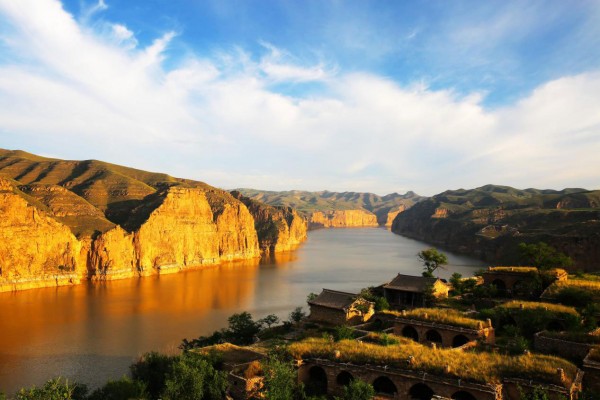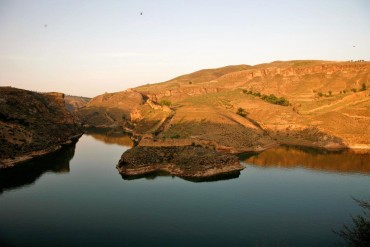Laoniuwan Fort was built in the third year of Chenghua in the Ming Dynasty (AD 1467), and reinforced with bricks in the 9th year of Chongzhen (AD 1636). The ancient fort is located on the cliffs close to the Yellow River Grand Canyon and was an important part of the Great Wall defense system in Ming Dynasty. The floor plan of the fort is rectangular, facing to south, with a circumference of 400 meters. Most of the original buildings in the fort had been destroyed, only Zhaobi, Zhenwu Temple, Guandi Temple, Guanyin Temple and flagpole base left. There is a stele outside the gate of the fort, which records the information of the restoration, from right to left, the official positions and names of the civil officer and military general guarding the fort were engraved on it. Laoniuwan fort was an outpost in the Ming Dynasty. According to the history of Ming Dynasty, Laoniuwan was called "Kou Wei" as "guarding the border in summer and guarding the river in winter". Its strategical position is easy to defend and difficult to attack, once played an important role in military defense.





